“Prince of Persia: The Lost Crown” marks a triumphant return for the beloved franchise, bringing a fresh perspective to the action-adventure genre on the PlayStation 5. Developed by Ubisoft Montpellier, this title revitalizes the series with a blend of classic gameplay elements and innovative new features. Set in a world rich with Persian mythology, the game introduces players to Sargon, a young warrior from The Immortals clan, embarking on a perilous journey to rescue Prince Ghassan from the cursed city of Mount Qaf. The game’s release has been highly anticipated, promising to deliver a blend of nostalgia and modern gaming experiences.
The game’s narrative is deeply rooted in Persian lore, offering a unique and culturally rich storyline that sets it apart from its predecessors. The development team’s dedication to authenticity and detail is evident in every aspect of the game, from character design to the world-building. “Prince of Persia: The Lost Crown” is not just a game; it’s a cultural exploration, a journey through time and mythology that promises to captivate players from start to finish.
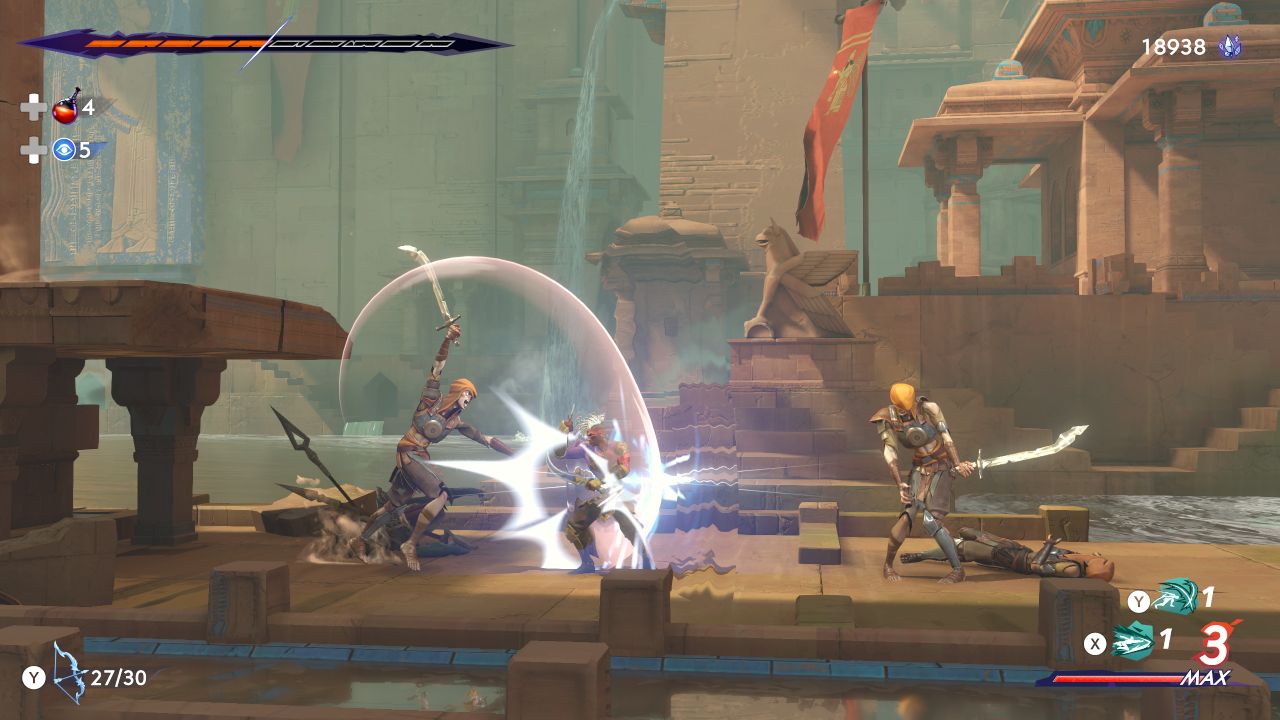 The introduction of Sargon as the protagonist is a bold move by Ubisoft, offering a fresh face to lead the franchise into a new era. The game’s development, led by a team renowned for their work on the Rayman series, has been a labor of love, with a focus on delivering a gaming experience that honors the legacy of “Prince of Persia” while pushing the boundaries of what the series can be. The anticipation for this game has been building, and it’s poised to be a landmark release for both the franchise and the action-adventure genre.
The introduction of Sargon as the protagonist is a bold move by Ubisoft, offering a fresh face to lead the franchise into a new era. The game’s development, led by a team renowned for their work on the Rayman series, has been a labor of love, with a focus on delivering a gaming experience that honors the legacy of “Prince of Persia” while pushing the boundaries of what the series can be. The anticipation for this game has been building, and it’s poised to be a landmark release for both the franchise and the action-adventure genre.
Setting and Story
“Prince of Persia: The Lost Crown” immerses players in a beautifully rendered world inspired by Persian mythology. The game’s setting, Mount Qaf, is a cursed city that serves as the backdrop for Sargon’s quest. This environment is richly detailed, with stunning landscapes and architecture that bring the mythical world to life. The game’s art direction, which draws from modern and urban culture, adds a contemporary twist to the traditional Persian aesthetic, creating a visually striking and unique gaming world.
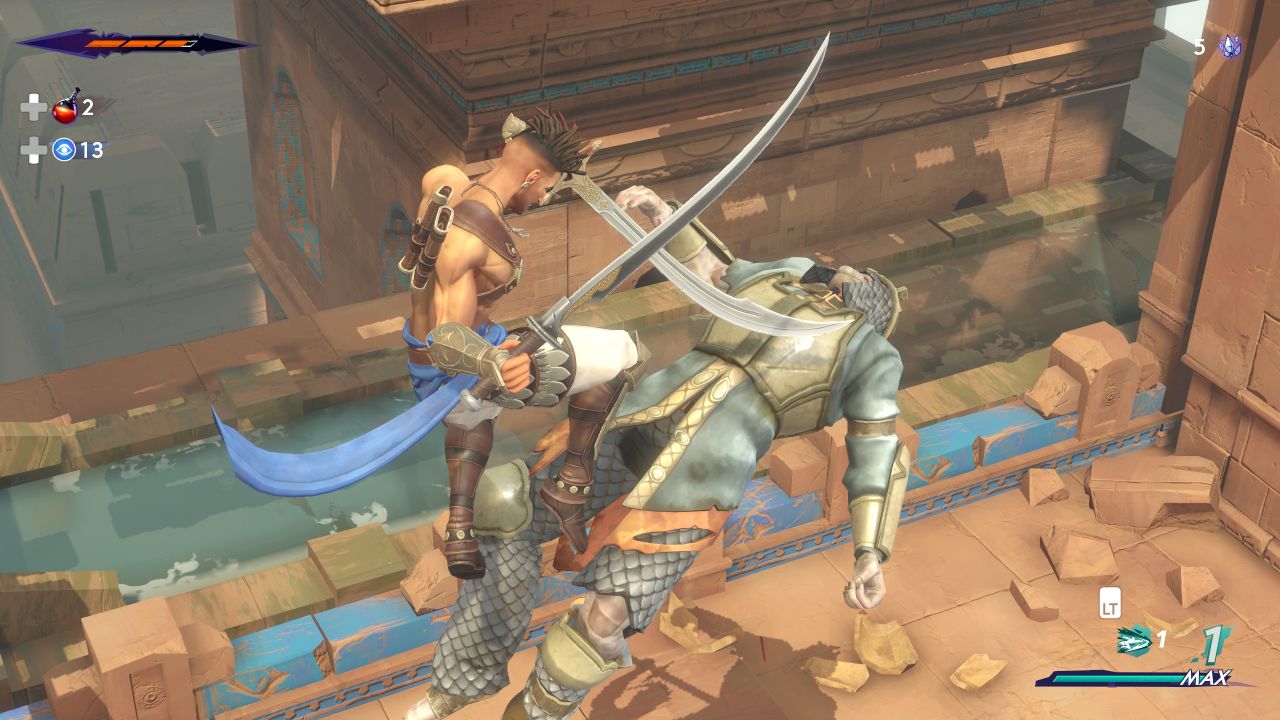 The story of “The Lost Crown” is a compelling tale of heroism, betrayal, and the struggle against dark forces. Sargon’s journey is fraught with danger and intrigue, as he navigates the treacherous city to rescue Prince Ghassan. The narrative is deeply interwoven with the game’s setting, with each location revealing more of the rich lore and history of Mount Qaf. The game’s use of Persian mythology not only provides a fascinating backdrop but also enriches the story with a depth and complexity that is both engaging and educational.
The story of “The Lost Crown” is a compelling tale of heroism, betrayal, and the struggle against dark forces. Sargon’s journey is fraught with danger and intrigue, as he navigates the treacherous city to rescue Prince Ghassan. The narrative is deeply interwoven with the game’s setting, with each location revealing more of the rich lore and history of Mount Qaf. The game’s use of Persian mythology not only provides a fascinating backdrop but also enriches the story with a depth and complexity that is both engaging and educational.
The game’s narrative structure is masterfully crafted, with each chapter unfolding like a page from an ancient epic. The story is driven by strong character development, with Sargon’s growth as a warrior and a hero being a central focus. The inclusion of mythical creatures and legendary figures from Persian lore adds an extra layer of excitement and wonder to the game’s story, making “The Lost Crown” a narrative experience that is as captivating as it is immersive.
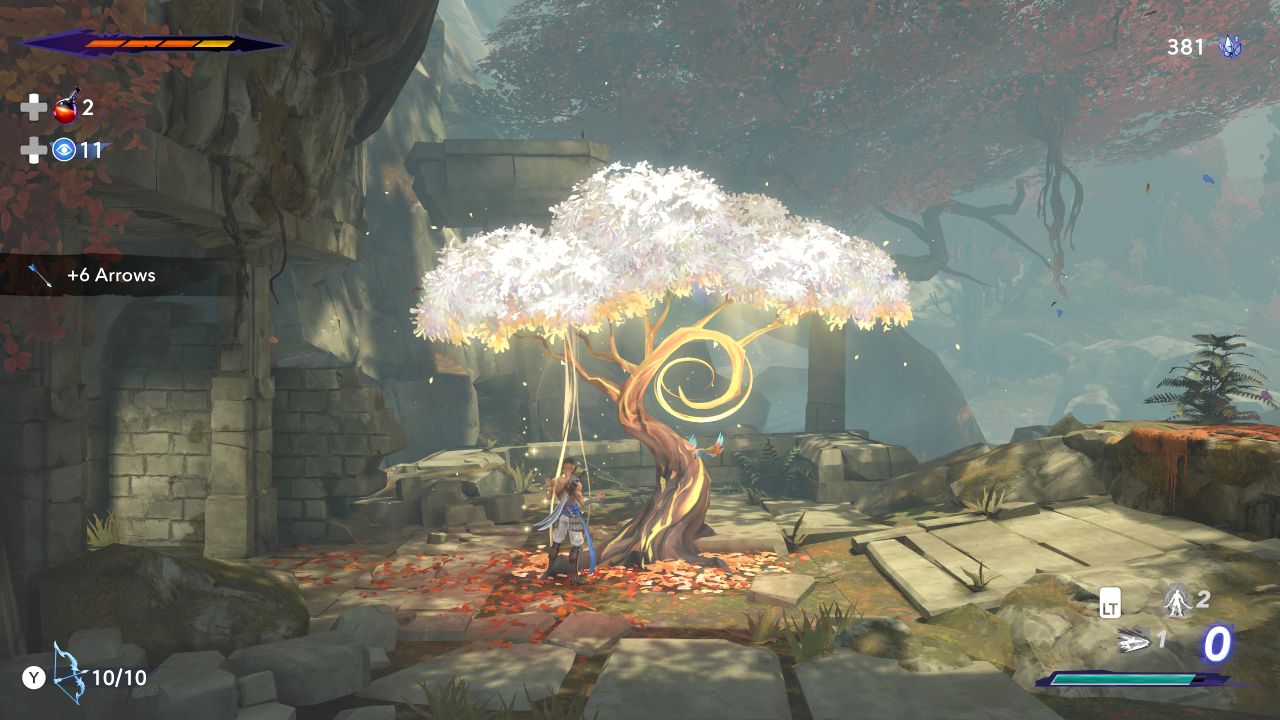 The setting and story of “Prince of Persia: The Lost Crown” are integral to the game’s appeal. The richly detailed world of Mount Qaf and the engaging narrative combine to create a gaming experience that is both visually stunning and emotionally resonant. The game’s story is a testament to the power of mythology and the enduring appeal of epic tales of heroism and adventure.
The setting and story of “Prince of Persia: The Lost Crown” are integral to the game’s appeal. The richly detailed world of Mount Qaf and the engaging narrative combine to create a gaming experience that is both visually stunning and emotionally resonant. The game’s story is a testament to the power of mythology and the enduring appeal of epic tales of heroism and adventure.
Gameplay and Mechanics
“Prince of Persia: The Lost Crown” offers a gameplay experience that is both familiar and innovative. The game retains the classic 2.5D side-scrolling action-adventure platform mechanics that fans of the series love, while introducing new elements that modernize the gameplay. Sargon’s abilities, including jumping, sliding, and air dashing, allow for fluid and dynamic movement through the game’s levels. The combat system is a highlight, with a mix of RDA and Na’vi weapons providing a variety of fighting styles and strategies.
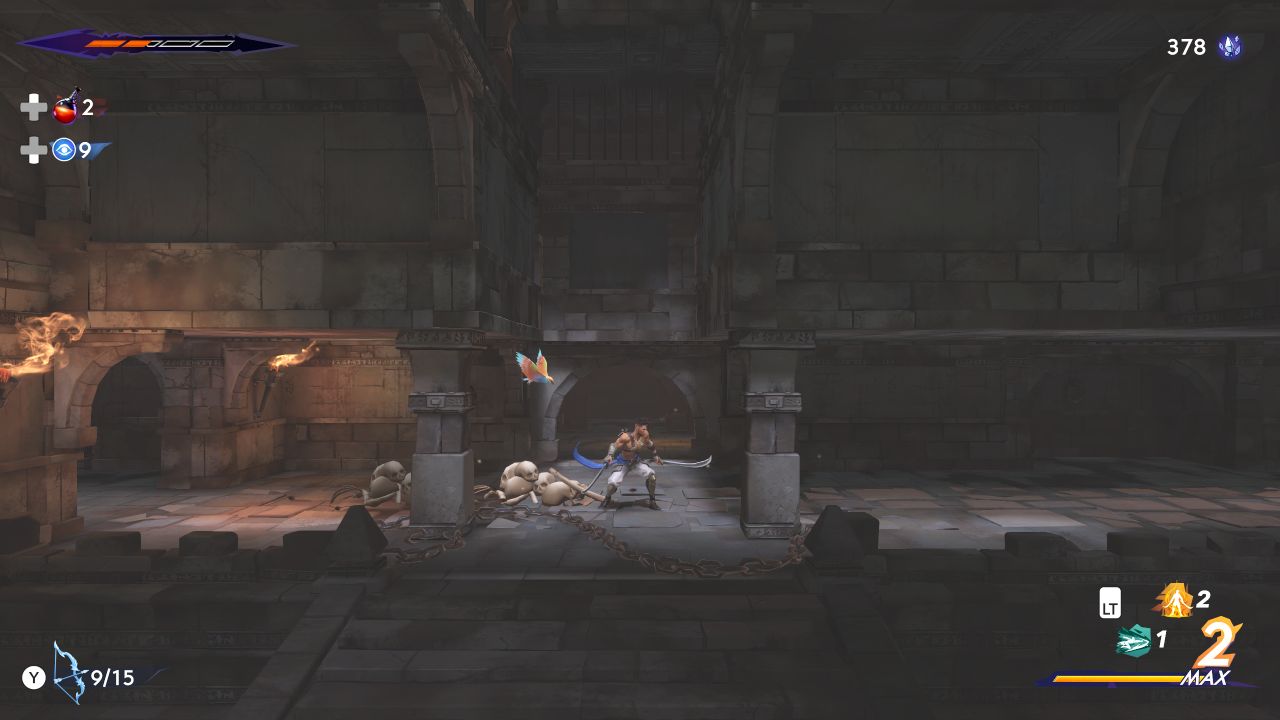 The game introduces unique time-based powers, such as Rush of the Simurgh and Shadow of the Simur
The game introduces unique time-based powers, such as Rush of the Simurgh and Shadow of the Simur
gh, which add a strategic layer to both combat and platforming. These abilities not only enhance the gameplay but also tie in beautifully with the game’s narrative theme of time manipulation. The inclusion of Metroidvania elements further enriches the gameplay, encouraging exploration and puzzle-solving in the interconnected world of Mount Qaf. The ability to pin unsolved puzzles on the game’s map is a thoughtful addition, aiding players in their journey and ensuring a seamless gaming experience.
The combat system in “The Lost Crown” is both challenging and rewarding. The need for well-timed parries and the use of Athra’s Glow for special abilities require players to be tactical and observant. The variety of weapons and the option to equip talismans for different abilities allow players to tailor their combat style to their preferences. The game’s emphasis on agility and acrobatics in combat makes for exhilarating battles that are as visually impressive as they are fun to play.
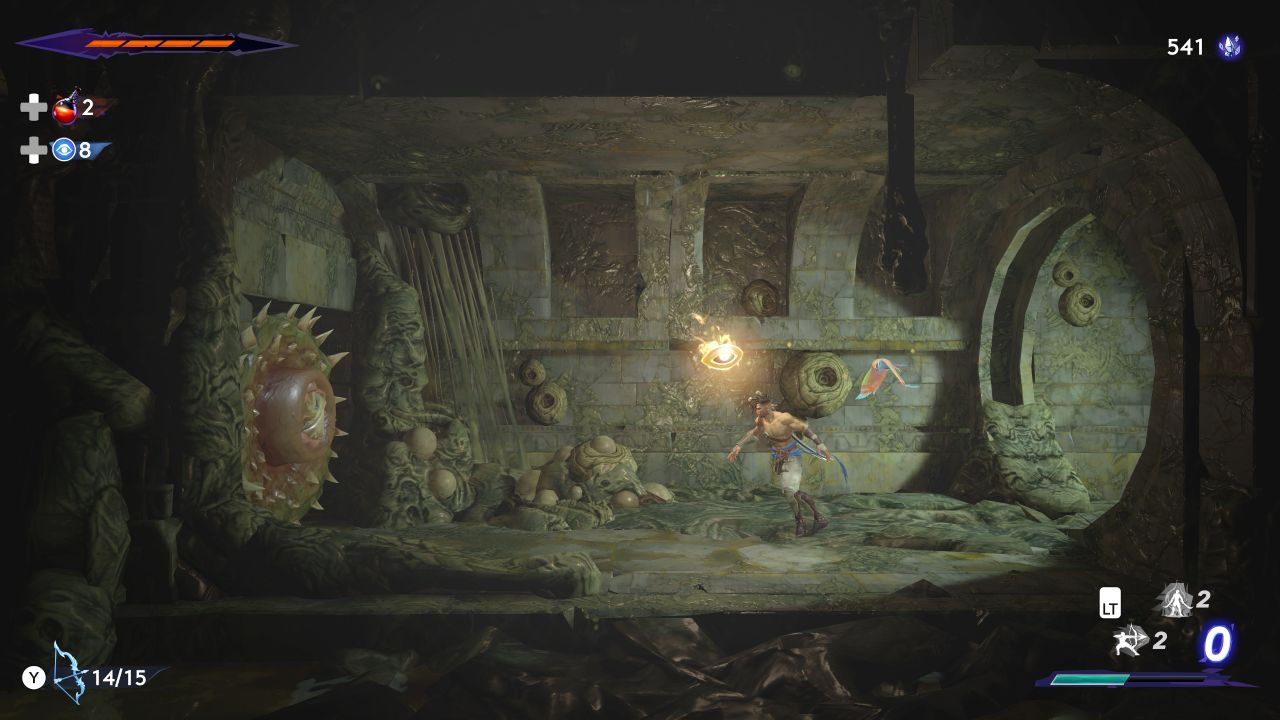 The game’s RPG elements, such as upgrading weapons with Time crystals and building Sargon’s skill tree, add depth to the gameplay. These features not only provide a sense of progression but also allow players to customize their experience according to their playstyle. The game’s balance between action, exploration, and puzzle-solving ensures that “The Lost Crown” remains engaging and fresh throughout its duration.
The game’s RPG elements, such as upgrading weapons with Time crystals and building Sargon’s skill tree, add depth to the gameplay. These features not only provide a sense of progression but also allow players to customize their experience according to their playstyle. The game’s balance between action, exploration, and puzzle-solving ensures that “The Lost Crown” remains engaging and fresh throughout its duration.
In summary, the gameplay and mechanics of “Prince of Persia: The Lost Crown” are a testament to Ubisoft Montpellier’s ability to innovate while staying true to the essence of the franchise. The game offers a perfect blend of action, adventure, and strategy, making it a standout title in the action-adventure platform genre.
Multiplayer and Replayability
While “Prince of Persia: The Lost Crown” primarily focuses on its single-player campaign, the game offers a substantial amount of replayability. The interconnected world, filled with secrets and hidden paths, invites players to explore every nook and cranny, promising new discoveries with each playthrough. The game’s design encourages players to revisit earlier areas with new abilities, unlocking previously inaccessible sections and revealing more of Mount Qaf’s mysteries.
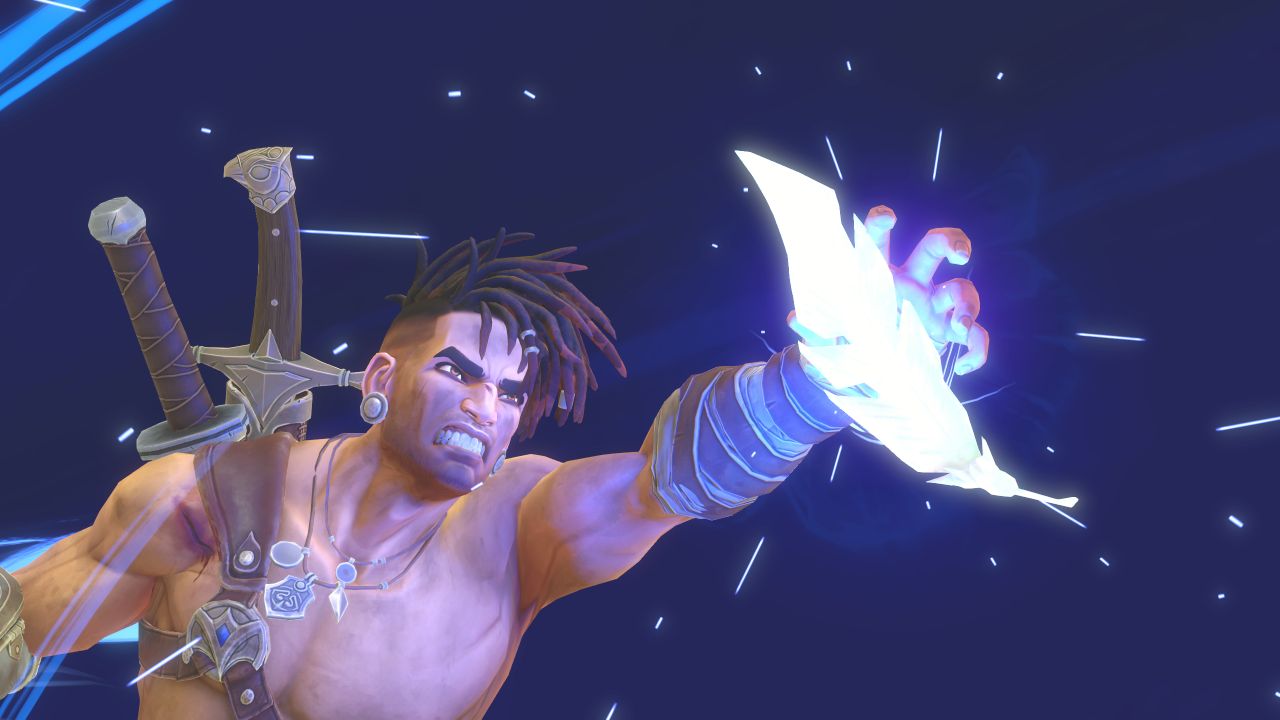 The game’s challenge and photography activities scattered throughout the open world add additional layers of engagement. These activities not only provide extra content but also encourage players to experiment with different strategies and approaches. The ability to replay playlist events with modified conditions further extends the game’s lifespan, offering new challenges and experiences even after the main story is completed.
The game’s challenge and photography activities scattered throughout the open world add additional layers of engagement. These activities not only provide extra content but also encourage players to experiment with different strategies and approaches. The ability to replay playlist events with modified conditions further extends the game’s lifespan, offering new challenges and experiences even after the main story is completed.
While “The Lost Crown” does not feature a traditional multiplayer mode, its rich world and engaging gameplay make it a game that players will want to discuss and share with others. The game’s community-driven aspects, such as weekly challenges and seasonal content, keep the game fresh and exciting, fostering a sense of camaraderie among players.
In conclusion, “Prince of Persia: The Lost Crown” offers a high replay value, with a world that begs to be explored and mechanics that reward experimentation and mastery. The game’s ability to remain engaging and fresh long after the initial playthrough is a testament to its well-crafted design and the depth of its content.
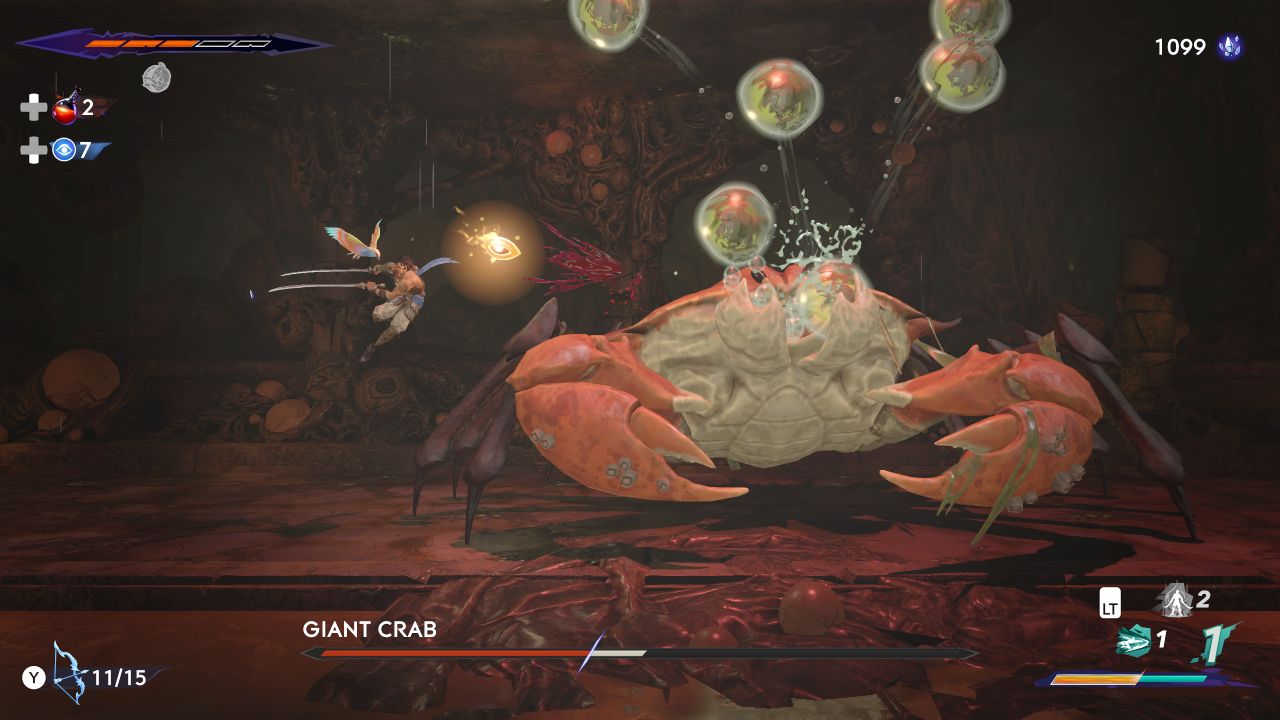 Graphics and Sound
Graphics and Sound
“Prince of Persia: The Lost Crown” is a visual masterpiece, with graphics that beautifully capture the essence of Persian mythology and the game’s unique setting. The art direction is a blend of traditional and modern influences, resulting in a game world that is both familiar and otherworldly. The attention to detail in the environments, character models, and visual effects is remarkable, creating an immersive and captivating experience.
The game’s sound design complements its visual splendor. The soundtrack, composed by Gareth Coker and Mentrix, is a blend of traditional Persian music and modern orchestral scores, creating an auditory experience that is both haunting and exhilarating. The sound effects, from the clash of blades to the ambient sounds of Mount Qaf, add a layer of realism and immersion to the game.
The voice acting in “The Lost Crown” is top-notch, bringing the characters and story to life. The dialogue is well-written, capturing the nuances of the game’s setting and characters. The game’s
audiovisual presentation is a crucial component of its storytelling, enhancing the narrative and gameplay experience.
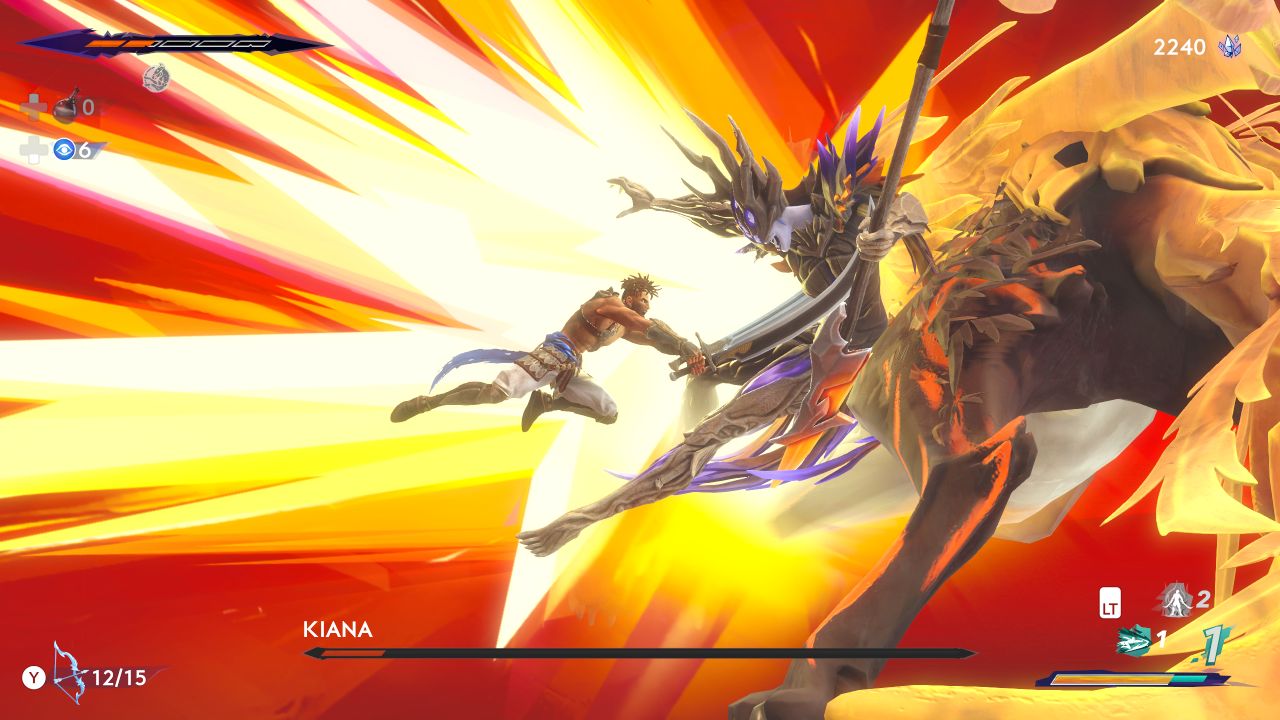 The integration of graphics and sound in “Prince of Persia: The Lost Crown” is seamless, creating a cohesive and immersive world that draws players in. The game’s visual style is a perfect match for its setting, with vibrant colors and intricate designs that bring the world of Persian mythology to life. The sound design adds depth to the gameplay, with each audio cue providing important feedback and enhancing the overall experience.
The integration of graphics and sound in “Prince of Persia: The Lost Crown” is seamless, creating a cohesive and immersive world that draws players in. The game’s visual style is a perfect match for its setting, with vibrant colors and intricate designs that bring the world of Persian mythology to life. The sound design adds depth to the gameplay, with each audio cue providing important feedback and enhancing the overall experience.
The game’s use of lighting and shadow plays a significant role in creating atmosphere and mood. The interplay of light and dark adds a dramatic effect to the game’s environments, making exploration a visually stunning experience. The attention to detail in the game’s graphics, from the textures of the environments to the animations of the characters, is impressive, showcasing the developers’ commitment to quality.
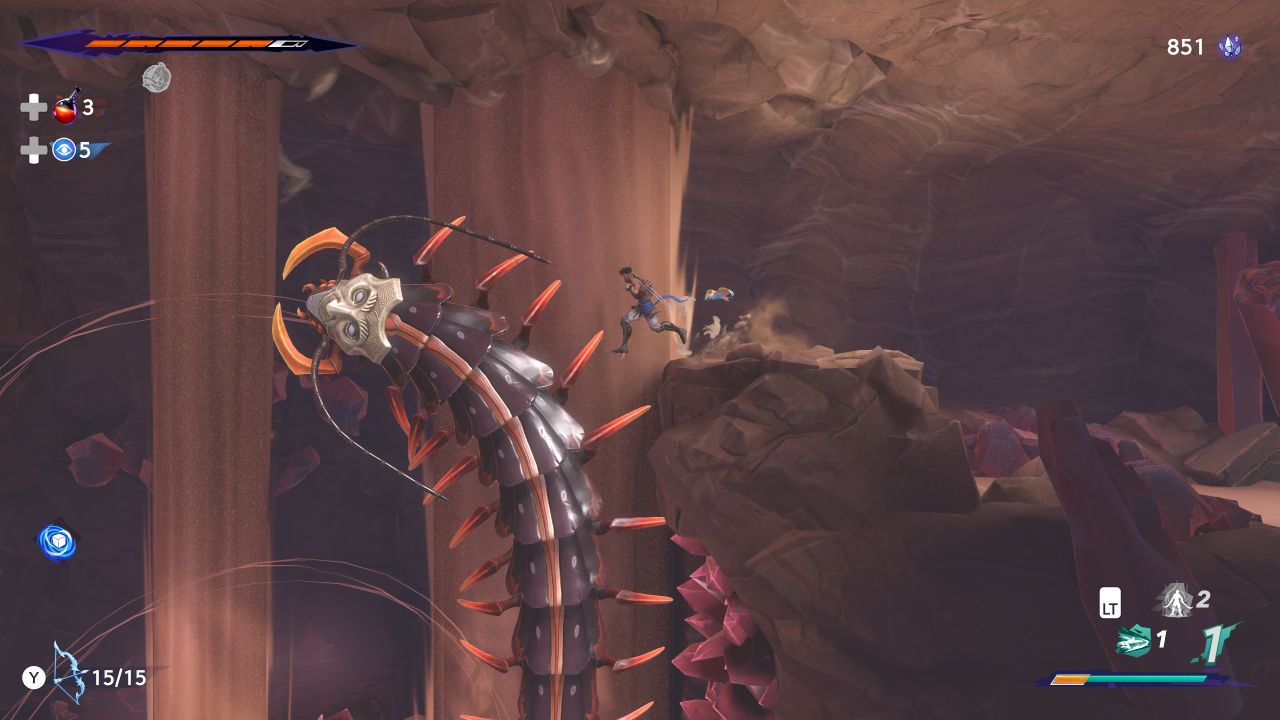 In conclusion, the graphics and sound of “Prince of Persia: The Lost Crown” are standout features that elevate the game to a cinematic level. The game’s visual and auditory presentation is a testament to the talent and dedication of the development team, making it a feast for the senses and a benchmark for future titles in the genre.
In conclusion, the graphics and sound of “Prince of Persia: The Lost Crown” are standout features that elevate the game to a cinematic level. The game’s visual and auditory presentation is a testament to the talent and dedication of the development team, making it a feast for the senses and a benchmark for future titles in the genre.
Final Thoughts
“Prince of Persia: The Lost Crown” is a triumphant return for the storied franchise, offering a fresh and exciting adventure that pays homage to its roots while charting new territory. The game’s blend of traditional platforming mechanics and innovative gameplay elements creates a rich and engaging experience that is both challenging and rewarding. The introduction of Sargon as the protagonist breathes new life into the series, offering a fresh perspective and a compelling narrative.
The game’s setting and story are beautifully crafted, immersing players in a world rich with Persian mythology and culture. The attention to detail in the game’s world-building and narrative is commendable, providing a deep and immersive experience that is both entertaining and enlightening. The game’s exploration of themes such as heroism, betrayal, and the struggle against dark forces adds depth to the gameplay and makes “The Lost Crown” a memorable and thought-provoking experience.
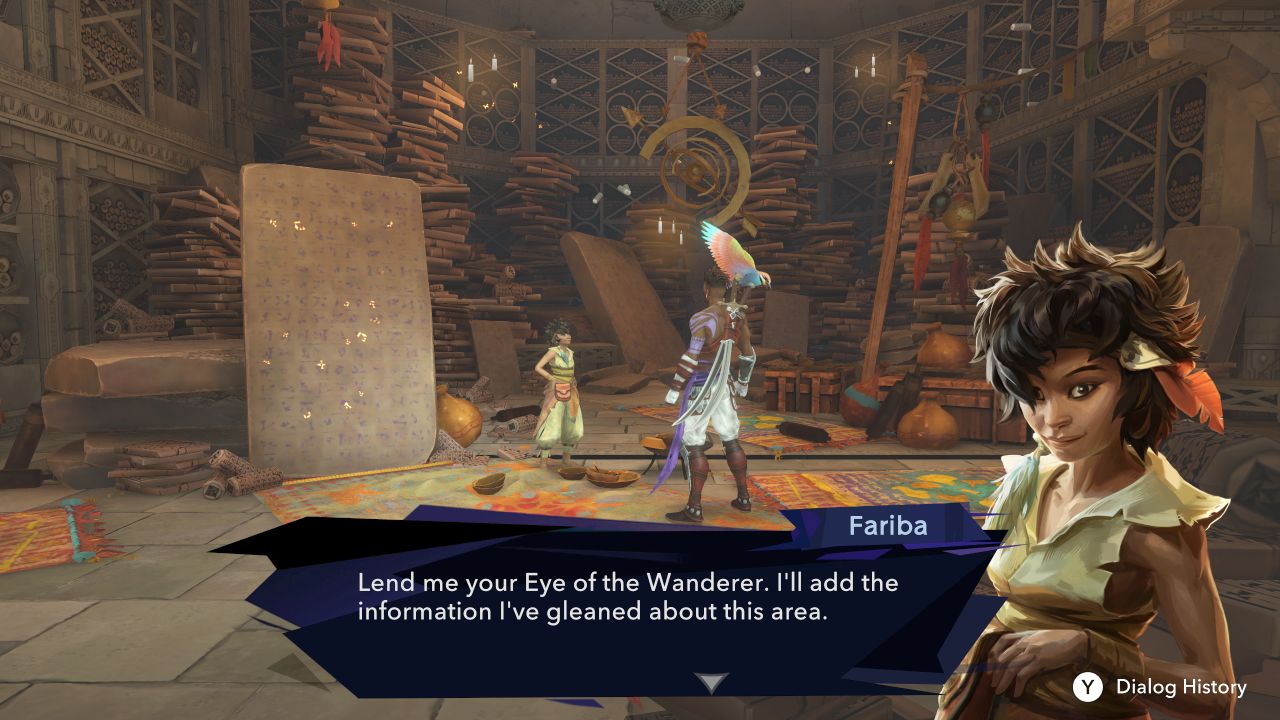 The gameplay mechanics are finely tuned, offering a perfect balance of action, exploration, and puzzle-solving. The game’s combat system is satisfying and dynamic, with a variety of weapons and abilities that allow players to tailor their playstyle. The inclusion of time-based powers and Metroidvania elements adds layers of strategy and complexity to the gameplay, making each playthrough a unique experience.
The gameplay mechanics are finely tuned, offering a perfect balance of action, exploration, and puzzle-solving. The game’s combat system is satisfying and dynamic, with a variety of weapons and abilities that allow players to tailor their playstyle. The inclusion of time-based powers and Metroidvania elements adds layers of strategy and complexity to the gameplay, making each playthrough a unique experience.
In conclusion, “Prince of Persia: The Lost Crown” is a must-play for fans of the series and newcomers alike. The game’s stunning graphics, immersive sound design, and engaging gameplay make it a standout title in the action-adventure genre. Ubisoft Montpellier has delivered a game that not only honors the legacy of “Prince of Persia” but also sets a new standard for the series and the genre as a whole.
We prepared this review with a digital copy of the Prince of Persia: The Lost Crown for the PS5 version provided by Ubisoft.
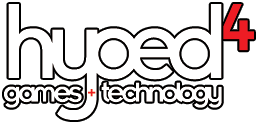
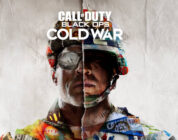
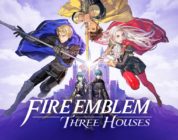
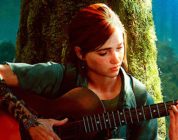
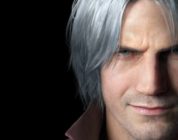
tkhXajRoxgNBdeP
NUuHCjazb
OdycmrixGJY
YXlBOnvk
Peggyt
I found this article both informative and thought-provoking. The analysis was spot-on, and it left me wanting to learn more. Let’s discuss further. Check out my profile for more related discussions!